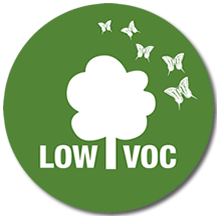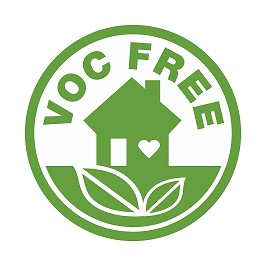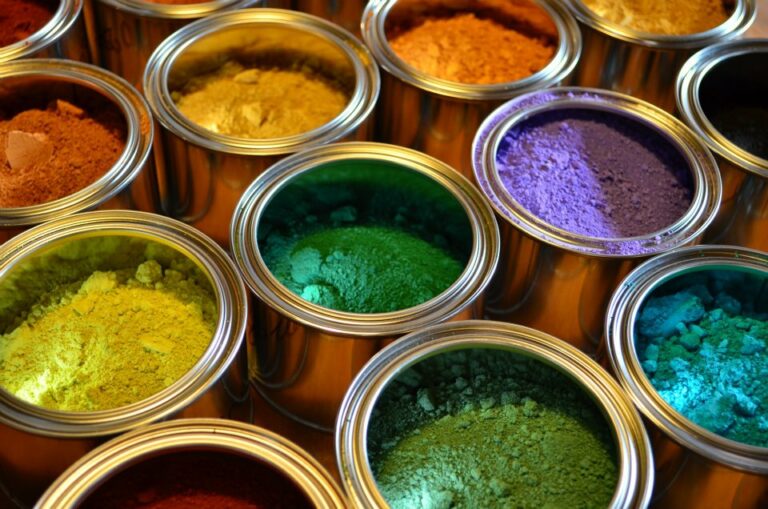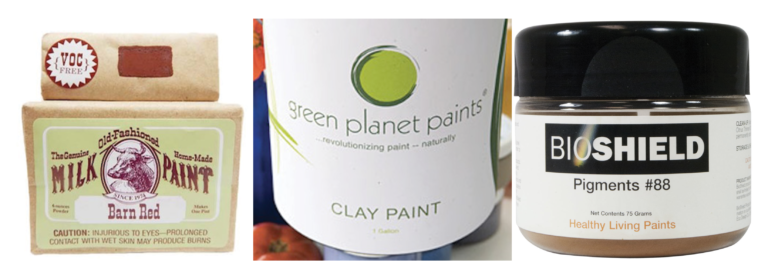Welcome back! I’m going to get straight to it, because I’m warning you, this is long. Let’s talk paint. Paint makes a room pretty. Paint makes a room bright and lively. Paint makes a room sexy and sultry. Paint can also make a room toxic. Ew. Yes, we are intentionally introducing toxins into our most sacred spaces. Our homes. Hey, I’m not here to judge-I’ve done it too. Maybe you are all up to speed on no- or low-VOC paints. Maybe you are asking VO-what? Maybe you have used no or low VOC paints because you know it’s the right thing to do, but you’re not quite sure why. Let’s get to it then.

WTH is VOC?
Volatile Organic Compound. “Organic,” that can’t be bad…wait…“volatile”? Yup. You don’t even really need to know what it is to know it sounds bad. The U.S. Environmental Protection Agency defines VOC as
“organic chemical compounds whose composition makes it possible for them to evaporate under normal indoor atmospheric conditions of temperature and pressure.”
Okaaaayyy…Well, the American Coatings Association laid it out really plain and simple for us (and included the toxic part).
“Broken down, “volatile” describes a liquid that evaporates at room temperature, and the word “organic” means it is a compound that contains carbon. Some VOCs react in the atmosphere with oxides of nitrogen in the presence of sunlight to form ozone, a precursor to smog.”
Quite simply, VOCs can be any number of chemicals found all around us. These chemicals do not need extreme conditions to turn into harmful gasses. The EPA states that the interior air in our home is three times more polluted than outdoor air. The culprit? Often times it is our interior paint.+ These VOCs can off-gas for years after application.

Now we know VOCs are bad for us. Just for the sake of conversation and clarity here’s a quick list of what VOCs can do to us, our families, and our pets:
- irritation to your airways and eyes
- trigger asthmas attacks
- headaches
- nausea
- damage to the liver, kidneys, or central nervous system
- prolonged exposure has even been linked to cancer.
If you need to see it for yourself, I don’t blame you! Check out what the EPA says.
So, how can we keep our home and family safe when deciding to spruce up a space with some color? Fortunately for us, with the EPA guidelines and certification agencies like GREENGUARD and Green Seal, manufacturers have been forced to create products that address wellness and lowering toxicity in our homes. When it comes to paint, there are three levels of paint choices: Low-VOC, No-VOC, and Natural.

Low-VOC
There’s some good news and bad news here. The bad? Well, low-VOC paints just contain low amounts of volatile organic compounds. They will still off-gas, just less, and there is no standard of what “low” means, so it is just in comparison to traditional paints. A paint considered low should contain less than 50g/L of VOCs. The good? Low-VOC paints are actually on the decline. Why you ask? Because there are so many NO-VOC options available, meaning you can make a better choice fairly easily and without thinking too much. Low-VOC paints were more like a starting point that we have evolved past.

No-VOC
Yup, you read it NO volatile organic compounds. But, there’s always a but, this doesn’t mean that they are chemical free. Some of these paints still contain harmful additives or solvents. And “no” means less than 5g/L of VOCs. Adding color tint (who doesn’t? Oh yeah, Scott…) can add 2-5 g/L of VOC more. However, all things considered, a no-VOC paint is going to be a less toxic option. Just like food, READ the labels! Mixed paints should be under 10g/L.
As the demand for no-VOC paints have evolved, so have the options, making it fairly easy to find and choose a paint…brand, at least…color is a whole other beast! In general, you can count on less odor, quick drying, and good coverage and finish.

Natural + Non-Toxic
While you are doing your due-diligence choosing a low- or no-VOC paint, there is still more to choose from. Natural paints have been popping up in the market for a while now and may or may not be the better option for you. Some of these eco-friendly paints include:
- Recycled paint
- Milk paint
- Plant or mineral-based paint
- Natural latex
- Ceramic paint
These are made from raw materials such as water, essential oils, plant, earth and mineral dyes, clay, milk protein, bee’s wax, and natural latex.
Making Choices
Sigh. Ok, I know you get it. But where to find it? Here are some great, easy to find, no-VOC options to start with:

Sherwin-Williams Harmony
- Zero-VOC with an added anti-microbial ingredient that helps minimize the growth of mold and mildew.
Benjamin Moore Natura/Aura
- Aura is a zero-VOC, mildew resistant paint that doesn’t require a primer.
- Natura is BM’s greenest paint with an acrylic base and Zero-VOC, Zero emissions, and CERTIFIED asthma & allergy friendly.
Valspar Ultra/Signature
- This Lowe’s brand is No-VOC, 100% acrylic latex with a mold and mildew resistant finish, and GREENGUARD Gold certified.
Behr Premium Plus
- Home Depot’s Behr brand comes in low- and no-VOC options, with Premium Plus being the no-VOC paint and primer in one.
Natural and non-toxic paints tend to be more difficult to come across and may be costlier. They may not cover and perform similarly to the mass-produced paints that you are used to, but there are some excellent options out there:

Old-Fashioned Milk Paint
- Claiming to be “the greenest paint there is, milk paint is non-toxic, all natural, and biodegradable.
Green Planet Paints
- These clay and plant based paints are truly no-VOC, even after color due to their mineral colorant system.
BioShield
- Offers paints, stains, thinners, and waxes primarily made from raw materials such as citrus peel extracts, essential oils, seed oils, tree resins, tree and bee wax, and natural pigments.
NOW WHAT?!

I know, I know, I’ve still left you asking, but what IS a VOC?!” I’ve got you! Go here. Trust me…you won’t read it all. More importantly, go here to see a list of where you’ll find these nasty chemicals in your home. I think you’ll find that list much easier to understand. Since there is no magic formula to choosing what is right for your family, it is up to you to make the most educated decision.This is most definitely, just a start.
